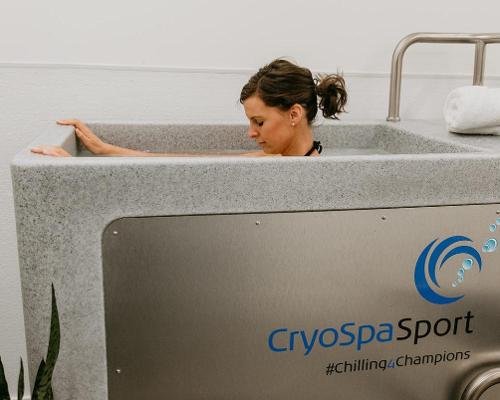24 Oct 2023
Lessons in cold water immersion therapy from Colin Edgar of CET CryoSpas
BY Megan Whitby

As cryotherapy takes the world by storm, founder of CET CryoSpas Colin Edgar shares his expert advice about the major do’s and dont's of cold water bathing.
Formerly the preserve of elite athletes, cold-water immersion therapy has rapidly gained popularity with the general public.
This boost in popularity has resulted in gyms, hotels and wellness centres across the country considering the addition of ice baths to their facilities. But, I’ve seen a trend of many sites paying for ice baths that fail to meet commercial standards.
So, what factors should be considered when choosing an ice bath for commercial use?
• Skim filtration - a filter which skims the surface of the water is essential to remove body oil, debris and other substances which float on the surface. In contrast, when the water is drawn from below the surface or, commonly in domestic ice baths, from near the bottom of the bath with only an inline filter, this will not adequately remove the body oil and dead skin floating on the surface.
• Suction outlets - another feature in commercial pools, spas and ice baths is the inclusion of at least two below-surface outlets. This is to prevent accidents happening in case a baby or small child falls into the pool, by lowering the risk of being trapped under the water by the force of suction at a singular outlet.
• Power connections - commercial spas and ice baths need a permanent power connection to comply with British standards.
Outside of just meeting regulations, there are also a number of other considerations commercial sites should take into account:
• Energy consumption - a major factor determining the amount of energy consumed is the temperature that the water needs to be maintained at to provide an effective cooling experience. Most domestic ice baths rely on cooling by conduction, which is a particularly inefficient means of heat transfer. The inclusion of jets in the ice bath adds cooling by convection, meaning the water can be maintained at a much higher temperature, significantly reducing energy consumption. An ice bath with 20 jets at 8°C will feel colder and extract more temperature from the body than an ice bath at 1°C with no jets.
• Individual variation - another big advantage of cooling by convection is that it caters for individual variation. Users who tolerate cold less well can use the ice bath without the jets switched on. Those who tolerate the cold better can put the jets on, and those who have a high tolerance to the cold can increase the power of the jets to maximise the cooling effect.
• Infection control -in cold water therapy, an often overlooked aspect is the effect of saltwater. Low-temperature saltwater is ideal for infection control because bacteria do not survive well in saltwater at 10°C or below. Adding epsom salts to the water means magnesium in the salts can be absorbed through the skin, promoting good sleep, which adds to the therapeutic effect of the cold bath.
• Depth of water - when standing in water to waist depth the hydrostatic pressure is equivalent to compression garments. This pressure aids the venous return helping the body process the chemicals produced during exercise and thereby hasten recovery. Sitting in a bath where the ankles are at the same depth as the hips does not create this impact.
Close Window